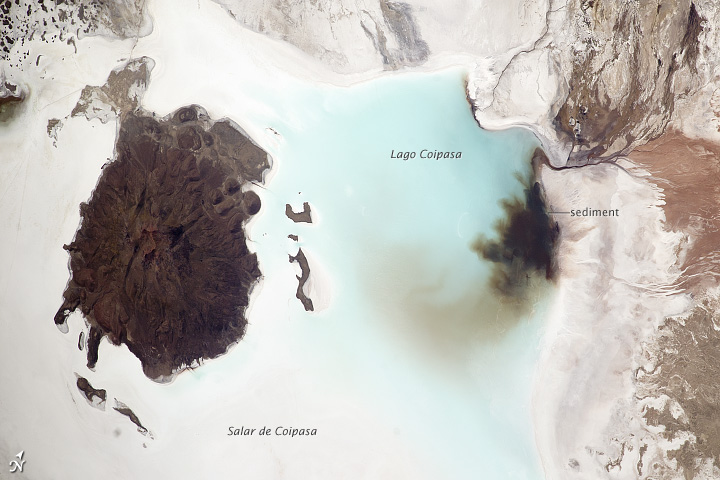Astronaut Photo: Peppery Sediments Cloud Salty Lake


A member of the Expedition 33 crew aboard the International Space Station took this stunning photograph of river sediments clouding Bolivia's Lake Coipasa on Sept. 20.
The shallow, light-blue lake sits atop the Salar de Coipasa, a salt flat in the Altiplano region of western Bolivia. "Salars" are arid, closed basins in which evaporation of mineral-rich waters gives rise to thick salt deposits. Some of these deposits also contain lithium, which is valuable for its use in batteries, and is in the process of being extracted in various locations throughout Bolivia.
Salar de Coipasa is located to the southwest of the saline Lake Poopo and northwest of the largest salt flat in the world, Salar de Uyuni. At Coipasa, a crust composed of halite — common table salt — provides the brilliant white color. The salt flat covers approximately 960 square miles (2,500 square kilometers).
In the northeast of the salt flat rests the lake, which is fed by the Lauca River. In this photograph, dark volcanic rock sediments can be seen flowing into the lake from the river.
Reach Douglas Main at dmain@techmedianetwork.com. Follow him on Twitter @Douglas_Main. Follow OurAmazingPlanet on Twitter @OAPlanet. We're also on Facebook and Google+.
Get the world’s most fascinating discoveries delivered straight to your inbox.



